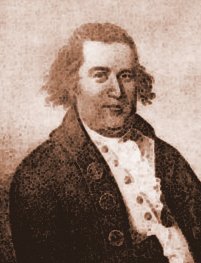 Just about every American grade school student has heard about the famous Midnight Ride of Paul Revere, but few heard of another man who also rode that night: William Dawes.
Just about every American grade school student has heard about the famous Midnight Ride of Paul Revere, but few heard of another man who also rode that night: William Dawes.
The poem by Henry Wadsworth Longfellow tells of the patriotic bravery of Massachusetts colonist Paul Revere and his efforts to warn his fellow colonists that the British were beginning an armed invasion to squash the coming American Revolution.
Revere was one of several colonists who volunteered to ride their horses from Boston to Lexington that night of April 19, 1775. Two others who were going to the same locations as Revere were William Dawes and Samuel Prescott.
William Dawes was born in 1745 and worked as a tanner in Boston. He also became active in the Boston militia as an ardent supporter of breaking ties with Great Britain in favor of forming a new country, the United States of America.
The Mission
As the colonists continued to organize, arm, and form militias, the British military hoped to nip the revolution in the bud by sweeping into Massachusetts and other areas to scatter the growing make-shift armies of the colonists. But the colonists were expecting the invasion. They had laid careful plans to give as much advance warning as they could to their forces in the smaller towns and country.
The mission of Paul Revere and William Dawes was to ride to Lexington to warn John Hancock and Samuel Adams when the British invasion began. This early warning system via horseback was organized by Dr. Joseph Warren. Hancock and Adams were in danger of being arrested by the British for their role in fomenting rebellion.
The Ride
On the night of April 18, 1775, the time came for Dawes and Revere to perform their duty after a large column of British regulars were spotted marching west. Both Dawes and Revere arrived at the Hancock-Clark House in Lexington at about the same time, although they each took different routes. Revere may have arrived slightly earlier, some accounts say. From Lexington, their next goal is to reach Concord.
It should be noted that there were other riders besides Dawes, Revere, and Prescott, many of whom were captured and arrested by other small bands of British forces already in the area. Dawes, Revere, and Prescott were also run down by British troops, but Dawes managed to escape.
The Chase
On the way to Concord, the British chased Dawes into the yard of a local farmhouse. Here Dawes pulled a clever ruse that allowed him to avoid capture. When he entered the yard of the farmstead, he shouted that he had “lured two British officers in.” This made his pursuers think an ambush had been prepared, giving time for Dawes to escape later on foot.
Paul Revere and Samuel Prescott were not so lucky either. They were captured, but Samuel Prescott, like Dawes, used trickery and evasive tactics to outwit the British. Prescott was the only of the three to make it to their ultimate destination, Concord.
The Accomplishment
The ride of William Dawes and the others is considered an important and significant achievement because it allowed colonial minutemen to get organized and face off with the British in the opening battles of the Revolutionary War. The British had hoped to stop the war before it started, but with the efforts of William Dawes, Paul Revere, Samuel Prescott and others, the Americans made it known they would not be submitting under the thumb of the British military or Crown.